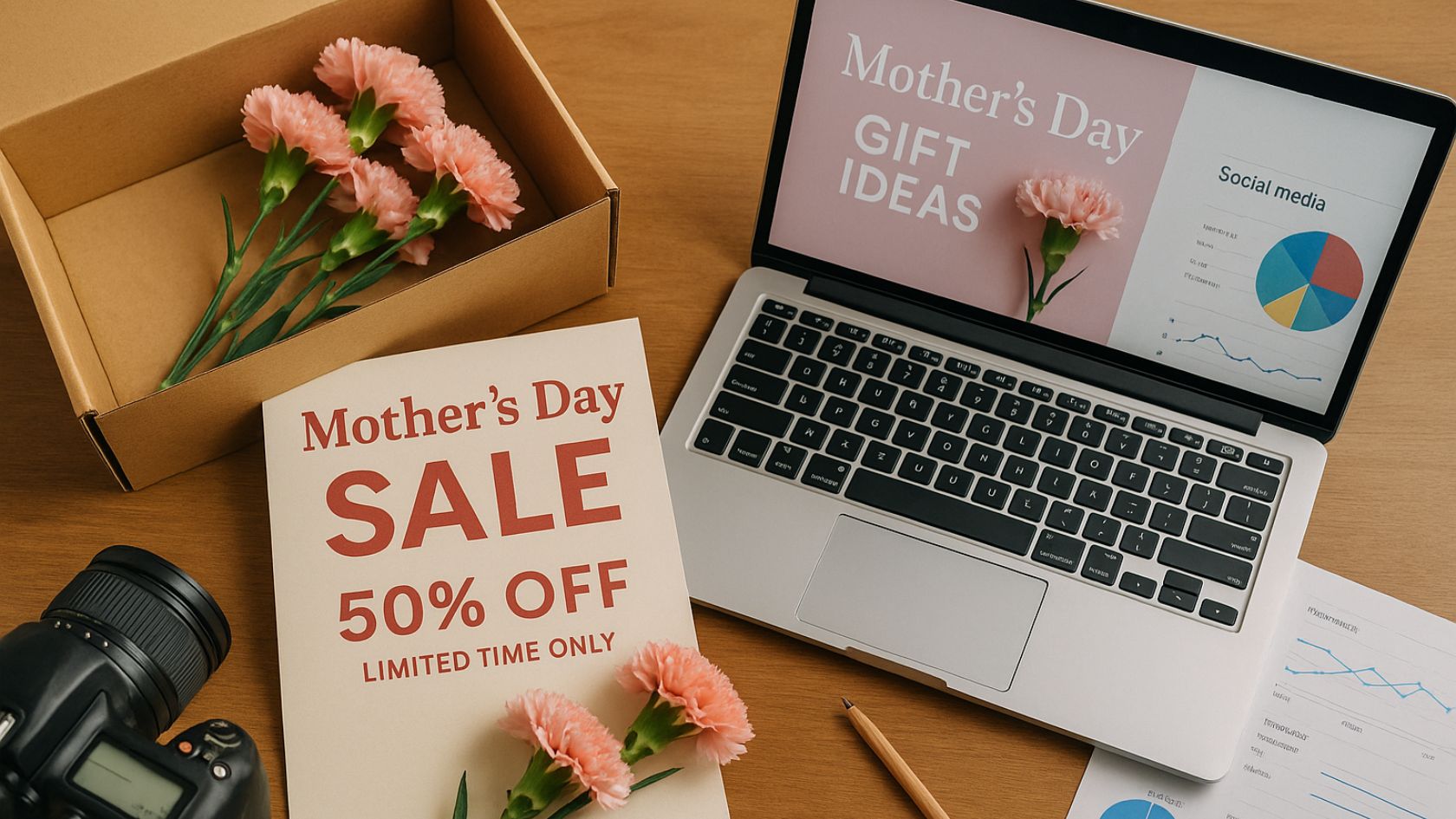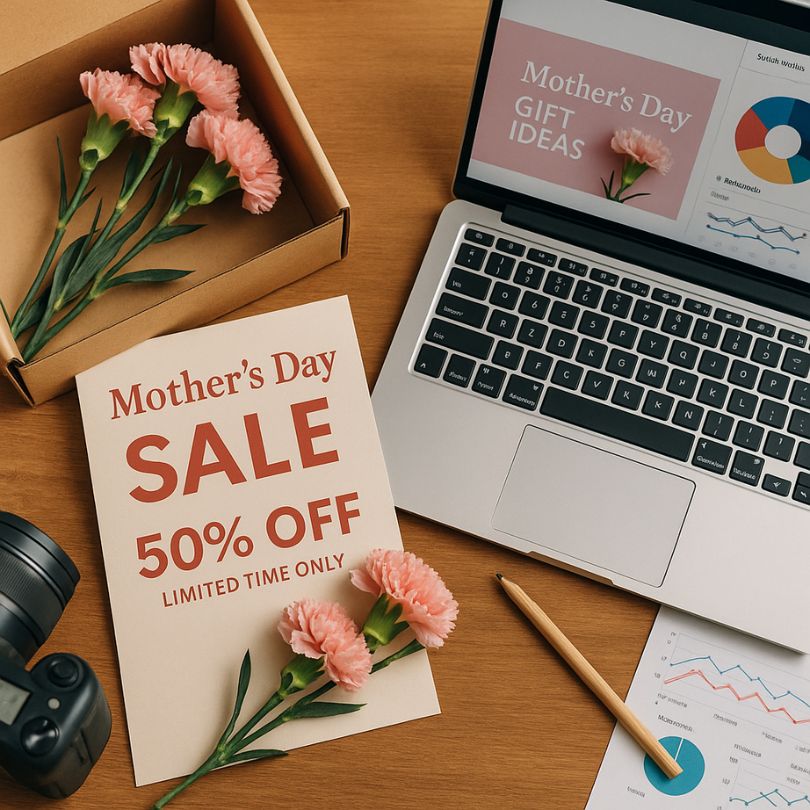
Mother’s Day Marketing Campaigns: A Complete Playbook for 2025

Mother’s Day marketing campaigns succeed when they combine thoughtful audience insights, relevant offers, and a clear, measurable plan that starts well before the holiday rush. Whether you sell flowers, jewelry, experiences, or subscriptions, this guide will help you craft a campaign that resonates with gift‑givers and moms alike—without feeling generic or overdone.
Mother’s Day is one of the highest‑intent gifting moments of the year, which means competition—and ad costs—tend to rise. To stand out, start with research and differentiated messaging. See what’s working in the market, analyze tone and positioning, and look for white space you can own. For inspiration on themes and tactics worth testing, explore these Mother’s Day marketing ideas and note which concepts align with your brand voice and audience.
Plan backwards from the date. A simple timeline: eight weeks out, confirm goals and budget; six weeks, finalize offers and hero products; four weeks, build landing pages and creative; two weeks, launch warm‑audience and organic pushes; final week, open paid prospecting wider with strong last‑minute options (e‑gifts, gift cards, and printable notes). After the holiday, pivot to thank‑you messages, user‑generated content (UGC), and nurturing flows to turn gifters into repeat buyers.
Match your offer to the job‑to‑be‑done. For gifters, convenience and certainty matter; for moms, self‑care and sentimentality often win. If you operate in ecommerce or dropshipping, validate angles and competitive hooks early by reviewing ad creative patterns and pricing in your category—specialized tools for dropship ad intelligence can save you time by surfacing proven creatives and funnels to adapt ethically.
Define goals, constraints, and audience
Start with one or two primary objectives: revenue growth, new‑customer acquisition, or average order value (AOV) lift. Set guardrails for CAC and contribution margin so you avoid unprofitable spend as CPCs rise into the holiday. Map your audiences into three buckets: existing customers, warm prospects (email/SMS subscribers, site engagers), and cold audiences. Each bucket should receive tailored creative and offers to maximize relevance without diluting the brand.
Segmentation and messaging that resonates
For Mother’s Day, you’re often speaking to gifters more than recipients. Segment by relationship (partner, adult child, friend, grandchild) and by context (first‑time mom, new empty nester, mother figures, in‑law). Develop message angles like “Make her morning effortless,” “A small luxury she’ll use daily,” or “Capture a memory that lasts.” Fold in emotional proof—UGC quotes, star ratings, and brief reviews—near the add‑to‑cart moment to reduce hesitation.
- Partners: Emphasize premium, personalization, and convenient delivery.
- Adult children: Highlight value bundles and fast shipping.
- Grandchildren or family friends: Focus on thoughtful, affordable gestures and easy gifting.
- New moms: Self‑care kits, comfort products, and “time back” gifts.
Offer strategy: bundles, personalization, and risk‑reversal
Offer architecture should increase perceived value without killing margin. Bundle complementary items (e.g., candle + bath soak + handwritten card), introduce limited personalization (initials, engraving, custom notes), and layer light risk‑reversal: extended returns, “arrives by Mother’s Day” badges, and easy digital backups if shipping slips. Use price anchoring—show the full value of individual items next to bundle pricing—and A/B test threshold‑based perks (free gift wrap over $60, free express shipping over $100).
- Good: 10% off site‑wide. Better: curated bundles with built‑in savings and gift wrap.
- Add urgency ethically: limited editions, order‑by dates, or limited appointment slots for experiences.
- Include a low‑friction fallback: instant gift cards with templated notes for last‑minute shoppers.
Channel plan: meet shoppers where they are
Email and lifecycle
Run a concise sequence: announcement (value prop), reminder (social proof), last‑chance shipping (urgency), and e‑gift pivot (no shipping required). Segment by intent signals: browsers who viewed gifting pages, add‑to‑cart abandoners, and past Mother’s Day purchasers. Keep subject lines simple and specific. Example: “A small luxury she’ll use daily + free gift wrap.”
SMS
Use SMS sparingly for time‑sensitive moments: shipping deadlines, limited drops, and pick‑up availability. Keep messages under 160 characters, include a short link to the landing page, and respect quiet hours. Pair SMS with on‑site banners so the story is consistent.
Paid social and search
Prospecting: run two to three creative angles (emotional, practical, luxury) with distinct first lines and thumb‑stopping visuals. Retargeting: feature UGC, short testimonials, and bundle breakdowns. Search: cover core intent terms (brand + mother’s day, gift for mom, last‑minute gift), product‑specific terms, and a DSA campaign to catch long‑tail queries.
Creative and content ideas
Set a flexible creative system you can remix quickly as deadlines approach. Shoot short vertical assets that showcase the unboxing experience, real‑life use, and handwritten cards. Capture lifestyle photos for the hero landing page and category thumbnails. Produce one long‑form guide (like this one) that can be atomized into social captions, email copy blocks, and PDP FAQs (“Is it gift‑wrapped?” “Will it arrive on time?”).
- UGC prompts: “What’s the small luxury that made your day better?” “Show us your gift‑wrap reveal.”
- Short videos: 6–10 seconds of product in use, with a quick headline overlay and price anchor.
- Carousel ideas: before/after, bundle contents, and personalization variations.
- Landing page hero: headline + subhead, deadline timer (optional), bundle grid, and social proof.
On‑site experience and conversion rate optimization
Create a dedicated Mother’s Day hub with clear wayfinding from the homepage, nav, and paid traffic. Include a “Shop by Relationship” filter, gift budget filters, and a prominent shipping‑by date. Add an inline gift‑wrap option on PDP and in cart to reduce friction. If inventory is tight, display honest stock indicators and promote e‑gift alternatives prominently to preserve conversion rates as deadlines loom.
Essential elements for the Mother’s Day landing page
- Promise bar (delivery, returns, gift wrap)
- Curated bundles with savings callouts
- “Arrives by” deadline and e‑gift backup
- UGC/testimonials near CTAs
- FAQ accordion tailored to gifting concerns
Measurement: what to track (and when)
Define success criteria before launch. For acquisition pushes, monitor blended CAC and new‑customer ratio. For repeat buyers, watch repeat rate and contribution margin. Build a simple daily dashboard for the two weeks leading in and the week after the holiday so you can spot issues and reallocate budget quickly.
- Leading indicators: landing page CTR, add‑to‑cart rate, email click‑to‑open rate (CTOR).
- Primary KPIs: conversion rate (CVR), AOV, ROAS/MER, and net contribution.
- Post‑holiday: refund rate, subscription retention (if applicable), and UGC volume.
Examples and angle starters
Every brand is different, but these angle frameworks can jump‑start testing. Replace the bracketed pieces with your specific benefits and proof. Keep first lines tight and mobile‑friendly, as most shoppers will discover your campaign on their phones.
- “A small luxury she’ll use daily.” Pair with a 6–8 second demo and price anchor under the headline.
- “Gift her a calm morning.” Show the unboxing and a 3‑step routine using your bundle.
- “Personal, without the wait.” Highlight on‑site personalization + ship‑by badge.
- “When shipping is tight, we’ve got e‑gifts.” Offer instant delivery and printable notes.
Common pitfalls to avoid
Three mistakes tank otherwise great Mother’s Day marketing campaigns: (1) late planning that leads to rushed creative and mixed messaging; (2) generic discounts that erode margin without increasing perceived value; and (3) ignoring post‑purchase nurturing that could turn a once‑a‑year gifter into a long‑term customer. Treat the holiday as both a sales moment and a brand moment—consistency beats hype.
- Don’t launch cold‑audience paid on the same day as your last‑chance emails; stagger to learn and scale.
- Don’t bury shipping deadlines; repeat them on PDP, cart, checkout, and in emails/SMS.
- Don’t forget accessibility: alt text, readable color contrast, and clear button labels.
Action checklist
- Finalize goals, budget, and guardrails eight weeks out.
- Pick hero products and build value‑led bundles.
- Create the Mother’s Day hub with filters and clear deadlines.
- Draft email/SMS sequences and load segments.
- Produce short‑form video and UGC prompts.
- Set dashboards for daily monitoring and plan a post‑holiday nurture.
Conclusion
When you start early, anchor on real customer needs, and keep the on‑site journey simple, Mother’s Day marketing campaigns can deliver both a memorable brand moment and profitable growth. For ongoing improvements beyond the holiday, apply a structured testing cadence and content system—this advanced content optimization playbook offers a practical, step‑by‑step approach you can adapt for seasonal campaigns all year long.